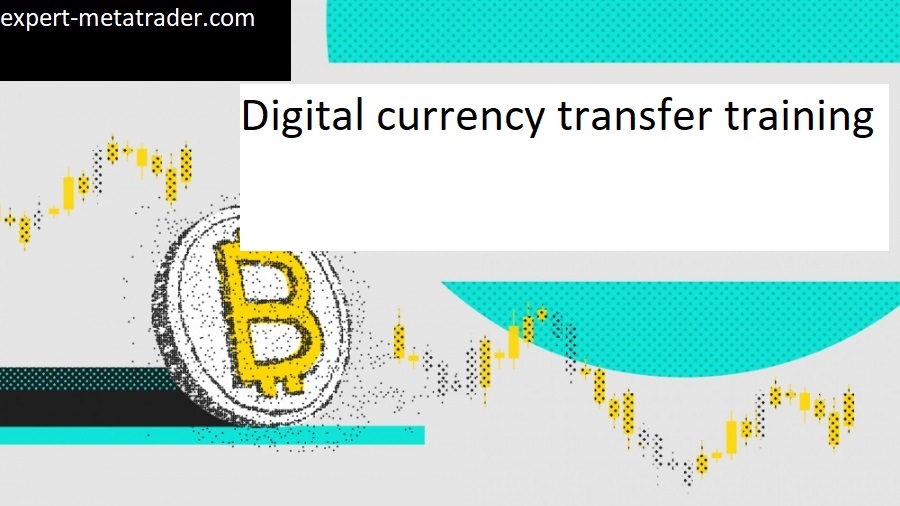
The first thing for a beginner who enters the world of digital currency is to choose an exchange and buy cryptocurrency in that exchange. Also, most users use centralized exchanges. Then, after buying crypto assets after some time, for certain reasons, we may need to use another exchange. So the problem is how to transfer crypto assets between exchanges. This article will show you how to transfer cryptocurrency from one exchange to another and what you should pay attention to before transferring.
What should I prepare before transferring crypto?
Before withdrawing or depositing cryptocurrencies from an exchange, there are a few things to consider: network, network fees, withdrawal fees, and transaction time.
When you are withdrawing or depositing, the exchange will ask you to select the withdrawal network or deposit network, they can be ERC20, TRC20, SOL, etc., you must make sure to select the same address as your deposit or withdrawal network or asset. do.
A network fee, also called a miner’s fee, is a fee paid to blockchain miners to confirm a transaction. It is different from crypto and network. Almost every digital currency exchange will charge you a withdrawal fee. Different exchanges have different withdrawal rates. To know the withdrawal rates, you can check the official website or apps of the exchange. The transaction time depends on the coin, token and network, for example, a Bitcoin transaction requires 6 confirmations and takes about an hour to reach your destination exchange address, but for some cryptocurrencies, it only takes a few minutes. pulls.
How to transfer crypto from one exchange to another?
To transfer your crypto to the destination exchange, you need to find the deposit address. Please remember to copy the correct address, otherwise you may lose your coins or tokens.
Labels: Order to build a Forex robot , Build a stock trading robot , Build a trading robot , Trader robot design , Free Forex Robot , Forex robot programming , Forex Expert Making Tutorial , Build a trading robot with Python , Download Forex Trading Robot , Buy Forex Trader Robot , Automated Forex Robot , Free stock trading robot , Learn how to build a Forex trading robot , Alpari trading robot , Forex robot for Android , MetaTrader robot design , MetaTrader robot programming , Forex robot design , Forex robot programming , Automated trading
Tether (USDT) from Huobi Global to OKEX for example:
Click OKEX app, click “Asset”, “Deposit”, then find “USDT”, and click, select “Network”, select “USDT-Solana” (because Huobi Global from the network Solana also supports it). Copy the “Deposit Address”.
Now go to Huobi Global app, click “Wallet”, “Witdraw”, select the coin you want to withdraw, now we select USDT, then “Withdrawal Address” (“Deposit Address” copied from OKEX ) in place, select harvest. Network, like OKEX, we select “SOL”, enter the withdrawal amount. Click on “Remove”.
Confirm the withdrawal information, you will receive a verification code. Enter the code and click “Confirm” (2FA or email verification)
After completing all the steps above, your coins will be transferred from Huobi Global to OKEX.
After a few minutes you can check the results on OKEX.
What is the cheapest way to transfer cryptocurrency between exchanges?
To transfer crypto, exchanges charge you a withdrawal fee, then you have to pay the network fee. In this case, you should look for a cheaper network to make the transfer, however, the network should be supported by exchanges and cryptocurrency. If not, you can move to an altcoin that supports the network. However, if you want to move to altcoins, you need to consider transaction fees. Crypto prices are not fixed, so if you transfer the cryptocurrency directly, sometimes you have to wait for hours, the assets are not tradable until it is confirmed by the destination exchange. In this case, you may experience a decrease in value. So you can convert the cryptocurrency you want to transfer to a stablecoin and then make the transfer
Transfer digital currency from exchange to wallet
Like any currency, digital currency can be accumulated and used for any number of purposes and transactions. Crypto wallets play an essential role in enabling cryptocurrencies to be useful to individuals and organizations.
A crypto wallet provides a way for users to verify their account balance to see how much cryptocurrency a user has. Crypto wallets enable users to both send and receive cryptocurrency transactions in an approach similar to how a traditional bank account would perform transactions. For many users, a crypto wallet is the primary mechanism for managing their digital currency balance.
Why are crypto wallets needed?
Crypto wallets are required for several critical things that help enable the practical use of digital currency. Among the reasons why crypto wallets are needed, the following can be mentioned:
- Management of digital currencies. Crypto wallets allow users to monitor the balance of digital currency assets. Transactions. Sending and receiving crypto payments is one of the most important features of crypto wallets and the main reason they are needed.
- Connecting to decentralized applications (dApps). A crypto wallet is required to connect and interact with Web 3.0 dApps.
- Username Identity All digital currencies are stored on a blockchain. A crypto wallet allows transactions to be made with a username that can be associated with a public key address on a blockchain.
- Key management. Functionally, digital currency exists as a public key address on the blockchain. A crypto wallet helps users manage the private encryption keys used to access a given address and enable a transaction.
What is a crypto wallet?
A crypto wallet is software or hardware that enables users to store and use digital currencies.
With digital currency, there is no physical currency, no paper money to put in a physical wallet or purse. The digital currency exists on the blockchain and there is no physical effect that the user can touch. However, there is still a need for individuals and organizations to understand ownership of cryptocurrency assets and be able to know how much is being held, much like a bank account provides a bank balance.
How do crypto wallets work?
With a physical wallet, people can hold fiat currency or bank and credit cards that provide access to funds. A crypto wallet does not actually contain cryptography, but instead holds the privileged credentials required in the form of private keys to access the blockchain for a given cryptocurrency.
With a traditional bank, users get bank accounts with account numbers. With a cryptocurrency blockchain, the public key provides the same basic concept as a bank account number. Having a bank account number or a public key is not enough to perform a complete set of transactions with an account.
Blockchain works with a public key infrastructure model for cryptography, where there is a public key and a private key that are supposed to be known only by users who own the asset or cryptocurrency. Both public and private keys are needed to access and transfer digital currency. Just as a private personal identification number is used to access a bank account with a bank card, a private key is also required to access an asset on the blockchain.
Crypto wallets store private keys and user information where public keys reside on the blockchain. With a combination of both public and private keys, a crypto wallet can enable secure operations to validate balances and send or receive cryptocurrency transactions.
Types of crypto wallets
With crypto wallets, users choose not only the service or vendor that provides the crypto wallet, but also the deployment approach.
Functionally, there are two main types of crypto wallets: hot wallets and cold wallets. Hot wallets are usually always on and connected to the Internet, while cold wallets are usually disconnected and only connected to the Internet when needed.
There are two main types of cold wallets:
Hardware Wallets With a hardware-based crypto wallet, the private keys of a user’s cryptocurrency balance are stored on a physical medium, usually a USB drive. Since a hardware wallet is a secure device that is not always connected, it ensures a form of isolation when the user pulls out the key.
Paper Wallet A paper wallet is really a low-tech solution whereby the user writes down the public and private key information on a piece of paper.
There are three types in the hot wallet category:
- Online (web) wallets. Perhaps the most common and widely used form of crypto wallet is found in online services. With an online wallet, an online service, such as a crypto exchange, holds the user’s public and private keys. Users access the wallet by logging into the online service.
- Desktop Wallets With a desktop wallet, cryptographic keys are stored in an application on the user’s desktop system.
- Mobile wallet. A mobile application can be used to store the user’s public and private keys to access and use digital currency.
Examples of crypto wallets
There is no shortage of crypto wallets for users to choose from in any type of approach. For paper wallet users, options include any type of paper, notebook, whiteboard, or surface on which the user can write a series of numbers.
Examples of hardware wallets are as follows:
ledger Ledger offers a variety of hardware wallet options, including the Nano S and Nano X devices.
Trezor offers entry-level Trezor Model One hardware wallets and premium Trezor Model T hardware wallets.
SecuX. SecuX has a growing portfolio of hardware wallets including the V20, W20 and W10 devices.
SafePal. SafePal’s primary product is the company’s S1 hardware wallet, which is a low-cost option.
Examples of hot wallets are as follows:
Coinbase. Coinbase offers all three types of crypto wallets, including online, desktop, and mobile options.
Exit. Exodus offers desktop and mobile crypto wallet options that can also be integrated with the Trezor hardware wallet.
Crypto.com. Crypto.com offers users a range of services as part of its exchange, including options for a crypto wallet with a web-based approach and a mobile app.
Metamask. MetaMask offers a mobile app as well as a desktop crypto wallet that works as an extension in the Firefox web browser.
Trust the wallet. Trust Wallet is a popular mobile crypto wallet option and offers support for non-fungible tokens (NFT).
How to choose the best crypto wallet
Often, the first choice of crypto wallet for new users is to have an online wallet with a crypto exchange that they are buying and selling digital currency with. Although this choice may be the easiest, it is not necessarily the best choice for all users.
Here are some tips for choosing the best crypto wallet:
cold vs hot
A hardware wallet provides a decentralized model for accessing digital currencies. For those who are particularly risk-averse and concerned about the possibility of an online service, desktop or mobile application being hacked or falling victim to ransomware or other attacks, a hardware wallet is a sensible choice. The challenge with a hardware wallet is that it’s not always on or easily accessible with online services, making it a bit more difficult to use.
security For hot crypto wallets, security is a priority. The user should choose a crypto wallet that has strong authentication capabilities, including multi-factor authentication.
Blockchain Support If users are looking to use a particular cryptocurrency, they need to make sure that the chosen crypto wallet technology supports the service in question.
Integration and access. Beyond cryptocurrency-specific support, users should also check whether the crypto exchange they are considering provides easy integration and support for the chosen crypto wallet technology.
Cryptocurrency holders generally tend to keep multiple digital wallets for their cryptocurrencies, including a hot wallet and a cold wallet, mainly for security reasons.
How does hot wallet work?
A hot wallet connects to a web server and initiates a financial transaction involving digital currency through browser-based web pages. However, it does not store virtual currencies. Instead, its key role is to digitally sign and authorize financial transactions. The hot wallet server facilitates the regular hot wallet service as it stores cryptographic keys and is accessible to the web server.
After a holder decides to mine a cryptocurrency, the cryptocurrency network applies a time order to maintain the neutrality of the cryptocurrency system. A holder then decides where and how to store the tokens and enforces a digital signature on the financial transaction. This transaction is then published in a digital currency network.
Finally, the record stored in the blockchain becomes part of the shared public ledger. Private key sets and cryptographic public keys are the basic components of digital currency transactions. Basically, the private key is used to digitally sign the authorization and is similar to passwords, while a public key verifies the signature.
final word
Most of the top digital currency exchanges are compatible with the transfer of different digital currencies. Depending on the digital wallet, there are different levels of security to protect private keys. However, it is recommended, as a cryptocurrency investor, to keep only a small portion of assets in a hot wallet. Investors may decide which funds they intend to use in the near future.








Comments (0)